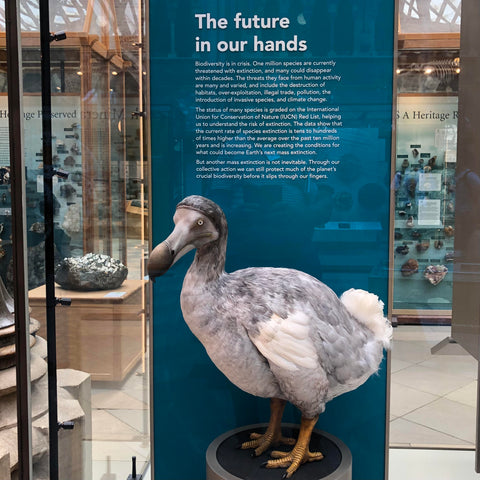
Magical Meadows
Share
What a lovely week I've had. Two days at the Floodplain Meadows Partnership Conference in Oxford based at the wonderful Pitt Rivers Museum, followed by a day at Chelsea with the Bumblebee Conservation Trust. I can't overstate the importance of the practical and science work that conservation NGOs like these do, and I'm always bowled over by the relentless enthusiasm and drive of their staff and volunteers. Thank you all for the work you do!

Botany Army
We were nearly 200 strong in Oxford, and spent time on manoeuvres in meadows around the city as well as under the disturbing stare of the reconstructed Oxford Dodo at the museum. I learnt a lot in terms of specifics, but I guess the bigger lessons were depressingly familiar.

The oft quoted figure of 97% loss of our wildflower meadows is an ancient guess; the real figure is almost certainly higher. I'd love to give you a more accurate estimate but we don't even have an inventory of which meadows remain (the Partnership does keep track of the flood plain meadows though). Meadows remain largely unprotected unless they're designated as SSSIs*, which seems to be increasingly difficult. They are regularly lost to neglect, development, tree planting and the plough.
There's no great financial incentive for landowners to establish meadows. Current subsidies are poor or non-existent. Species rich grassland sequesters fabulous quantities of carbon, but it's currently so under-acknowledged in policy it doesn't even have a carbon code. While all the hydrologists know how important it is as part of natural flood prevention, DEFRA apparently does not. There are still huge questions over IHT treatment for farms which have switched away from food production and into natural capital schemes.
You might think that biodiversity net gain would be a great way to encourage more meadow creation, but apparently there's another policy problem here. It's given a low rating on the DEFRA 4.0 metric because apparently wildflower meeadows are difficult to create. Pontential schemes are therefore discouraged. Brilliant.

Concentrating at Christchurch
There were plenty of people at the conference who ARE busy making new meadows or restoring old ones. New meadow establishment and maintenance is actually pretty straight forward, but you do need to know what you're doing and have access to good quality seed or green hay. A new or restored site isn't going to be a patch on an old meadow, but it's a good start.
I was hugely encouraged too by the people I met from the farming industry like Andy Rumming, a beef farmer in Wiltshire, and Tim Field, of the Northeast Cotswold Farm Cluster. There are ways to profitably incorporate wildflower meadows into farming systems, even without a coherent government subsidy system. There is - of course - a lot to like about them as a farmer, not least because of the wonderful soil structure they promote and the hay they make.
Chelsea Flower Show
After Oxford, on to the Chelsea Flower Show. It's an event which feels more and more bonkers, but the RHS generously provides space for some NGOs to display there which is gold dust for them. The Bumblebee Conservation Trust's senior education officer, Andy Benson, did a great job on the stand, which was all about the Trust's "Bee The Change" campaign (Geddit?) and which we helped sponsor.

BBCT CEO Gill Perkins and friend
I've been helping out for the Trust at shows for a few years now, and it's amazing what a sea change there has been among gardeners. Even 10 years ago some of the Trust's key messages to them were pretty controversial; now they're normal practice. Urban and suburban gardens are incredibly valuable oases for bumblebees and solitary bees.
A lot of the punters we chatted to were worried about seeing small numbers of bees so far this year. I am too, as were the entomlogists at the Oxford Conference. The cold spring has meant that it's too early to be sure, but we know that butterfly numbers collapsed after the 1976 drought, and I worry that bumblebees might have been similarly affected. The intervening 47 years haven't been kind to pollinators, whose populations are now less resilient. Fingers crossed.
I'm pleased to report though that the wildflower roof and meadows here are humming, thank goodness. We're seeing more new species and no apparent fall in invertebrate numbers - but then again, many of them have as close to optimum conditions here as we can make. Fingers double crossed.


*Sites of Special Scientific Interest

